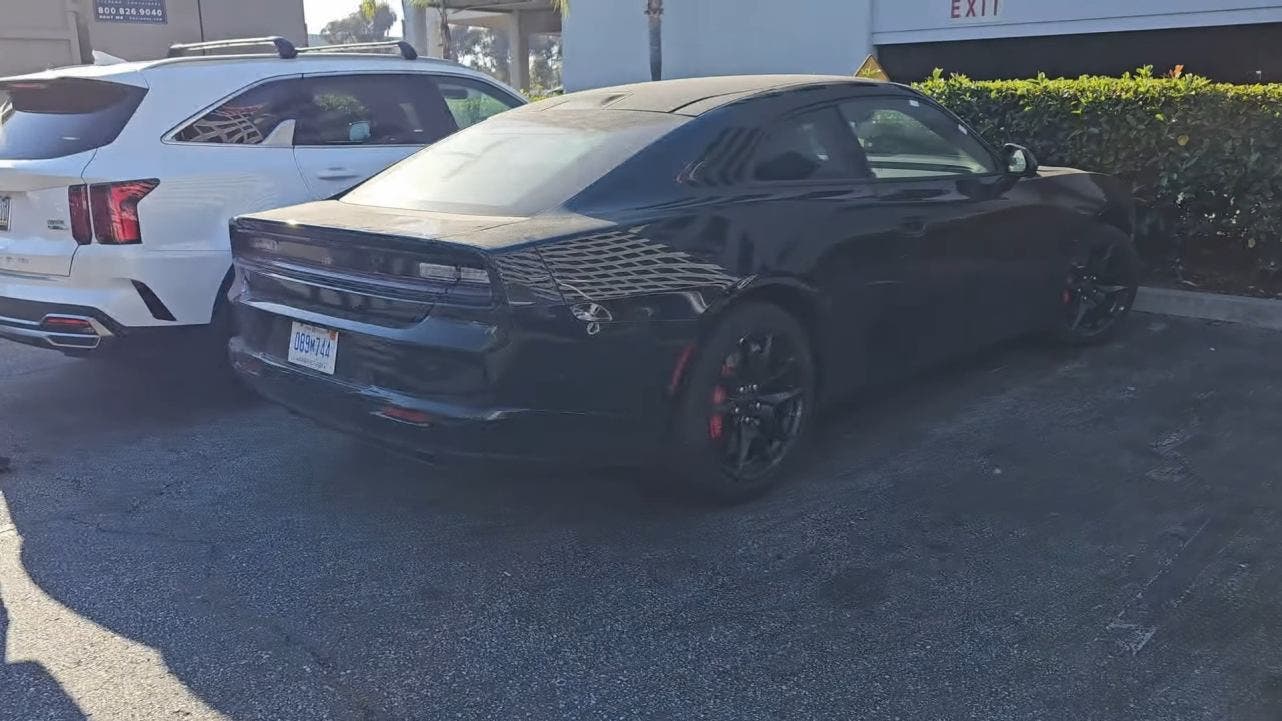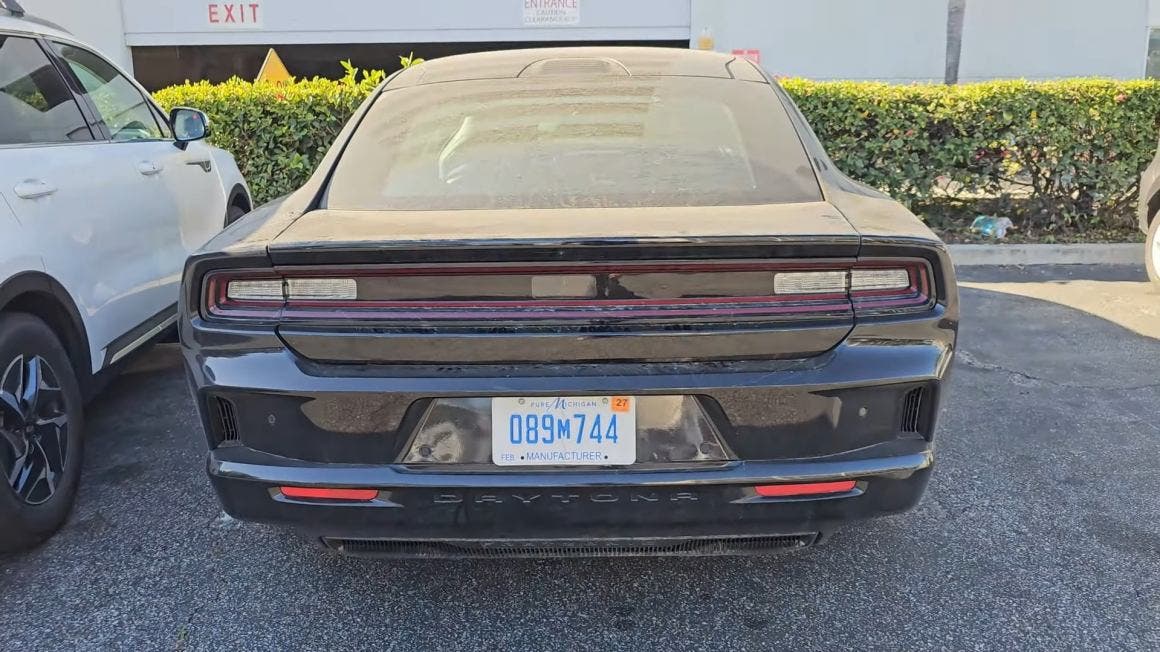It’s been more than three months since Dodge unveiled to the world what will be the first electric muscle car in the world. We’re talking, of course, about the new Dodge Charger Daytona. However, the new generation of Charger will also come to market with several internal combustion engine options, although it will debut next year. It seems though that we’ll have to wait another three months before customer deliveries begin. Dodge has in fact stated in recent days that deliveries are delayed by 90 days due to some electrical problems. In the meantime, the automaker hasn’t talked much about this model and has remained rather quiet about it in recent months. It seems that testing, however, is continuing, as shown by recent images of a dust-covered Charger in a parking lot somewhere in Michigan.
Dodge Charger Daytona: testing continues before production

The American brand owned by Stellantis is making some adjustments before officially starting production. The prototype seen in Michigan is a model equipped with some devices that won’t be part of the final version. The Charger in question shows black finishes, Y-spoke wheels, and red Brembo brake calipers.

Dodge should start first deliveries by the end of the year, with production expected to begin, at this point, during the last quarter of 2024. However, it seems that many potential customers will be waiting for the Charger with an internal combustion engine, while those interested in the electric version are only a small fraction. This demonstrates the current market trend for these vehicles, which has been continuously declining after a few positive months.
The electric Charger will be available in two versions: R/T and Scat Pack. The first will have 496 horsepower, while the second will go up to 670 horsepower with 540 and 850 Nm of torque respectively. The electric architecture is 400 volts, but a top-of-the-range model with 800-volt architecture, equipped with a two-speed transmission and four-digit power output, also seems to be in development.

As for the Chargers with internal combustion engines, these will have 420 horsepower in the base version and 550 horsepower in the higher one. Both will mount a 3.0-liter twin-turbo six-cylinder unit under the hood. The V8 will no longer be used. Only time will tell which of the Chargers will be more successful, but in all likelihood, most customers will choose the versions with internal combustion engines. While waiting to discover further details, such as prices, we leave you with the images of the latest prototype caught on the road.

